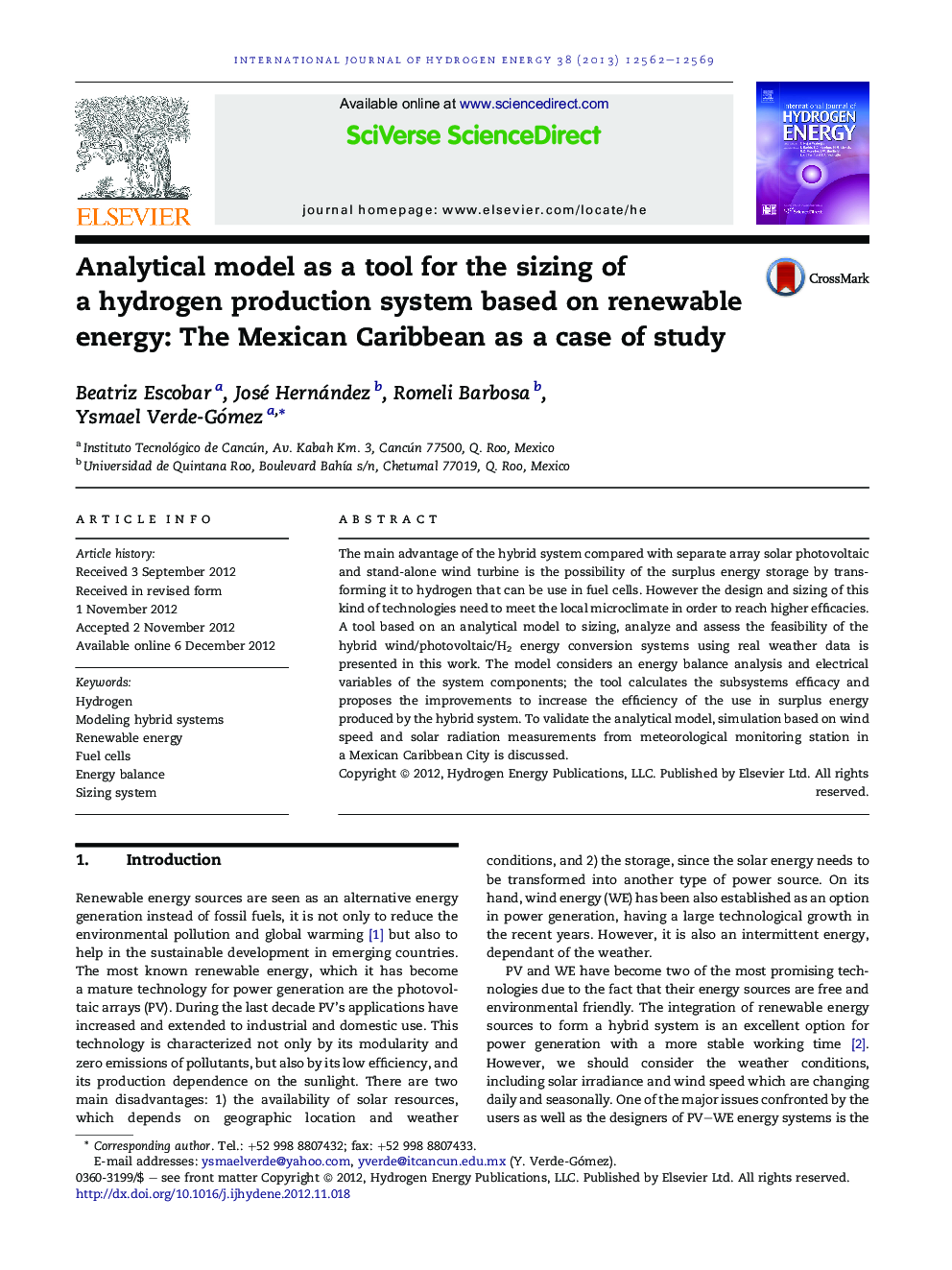| Article ID | Journal | Published Year | Pages | File Type |
|---|---|---|---|---|
| 1281487 | International Journal of Hydrogen Energy | 2013 | 8 Pages |
The main advantage of the hybrid system compared with separate array solar photovoltaic and stand-alone wind turbine is the possibility of the surplus energy storage by transforming it to hydrogen that can be use in fuel cells. However the design and sizing of this kind of technologies need to meet the local microclimate in order to reach higher efficacies. A tool based on an analytical model to sizing, analyze and assess the feasibility of the hybrid wind/photovoltaic/H2 energy conversion systems using real weather data is presented in this work. The model considers an energy balance analysis and electrical variables of the system components; the tool calculates the subsystems efficacy and proposes the improvements to increase the efficiency of the use in surplus energy produced by the hybrid system. To validate the analytical model, simulation based on wind speed and solar radiation measurements from meteorological monitoring station in a Mexican Caribbean City is discussed.
► An analytical model is presented as an easy tool for the sizing of hybrid systems. ► The model considers an energy balance and the electrochemical performance. ► The model allows improve the efficacy of hydrogen hybrid systems. ► Using experimental data, this tool assesses the feasibility of H2 hybrid systems. ► Weather experimental data of Cancun City were used as a case of study.
